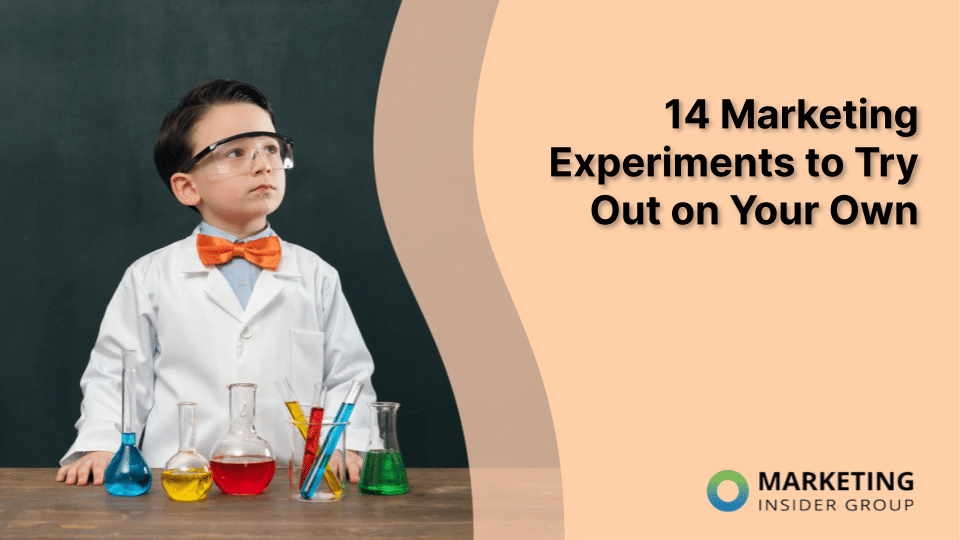
14 Marketing Experiments to Try Out on Your Own
Marketing is at its best when it’s like a science experiment. Think of your strategy as a series of tests where each result teaches you something new. It’s a cycle of trying, learning, and improving that keeps getting better, whether your ideas hit the mark or miss it.
Why does this work so well? Because marketing is rich with data, goals are clear, and there are always more ideas than there are resources to try them out. It’s the perfect playground for testing what works and what doesn’t.
But here’s the tricky part: Running a smart marketing test isn’t about trying out every new tip or trick. It’s about having a solid plan, sticking to it, and making sure every test teaches you something.
At Marketing Insider Group, we’re all about making marketing smarter, not harder. That’s why we’re sharing 14 marketing experiments that aren’t just shots in the dark. They’re thoughtful, strategic moves that build on each other, designed to help you find out what really works for your audience.
1. A/B Testing Email Subject Lines
The subject line is the gatekeeper of your email marketing campaign. It’s the first thing recipients see, and it determines whether your email gets opened or sent straight to the trash. A/B testing, also known as split testing, is a fantastic way to find out what resonates with your audience.
Start by crafting two different subject lines for the same email. They should be distinct enough to test a specific hypothesis, like whether a question performs better than a statement or if including a number increases open rates.
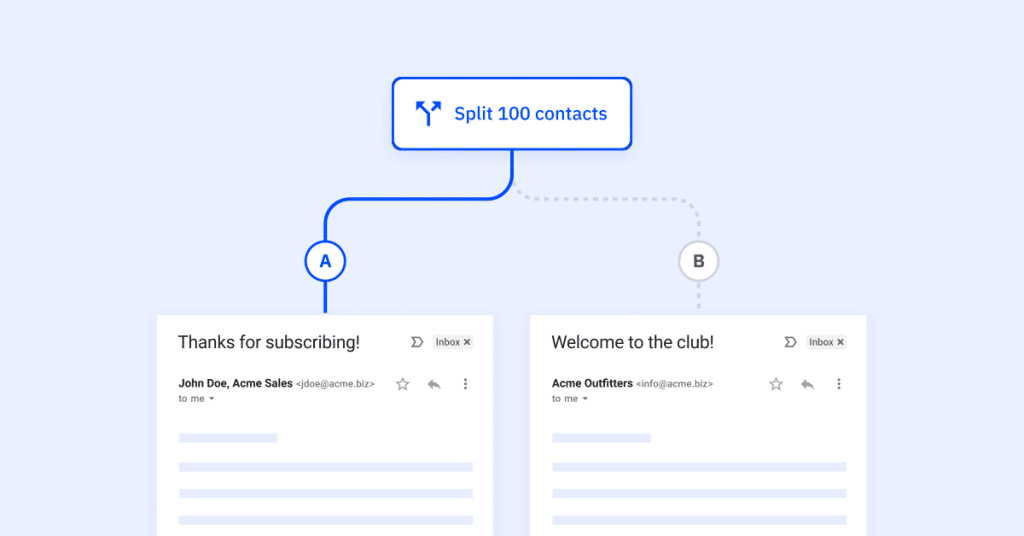
Image Source: Active Campaign
Split your email list into two groups and send each one a different subject line. Then, analyze which one performed better in terms of open rates and click-through rates. This data will guide you in optimizing future campaigns for better engagement.
2. Social Media Platform Performance
Not all social media platforms are created equal, especially when it comes to engaging with your specific audience. Each platform has its unique environment and user expectations. Instagram, for example, is highly visual, while Twitter is about brevity and immediacy.
To understand where your brand stands, run experiments across different platforms. Post the same content across all platforms or tailor the content slightly to fit each platform’s style.
Measure engagement rates, follower growth, and conversion rates to see which platform is the most effective for your brand. This will help you decide where to focus your social media marketing efforts.
3. Content Format Variety
Your audience’s preferences can vary widely when it comes to content formats. Some may prefer in-depth articles, others love infographics, and some might engage more with video content. In fact, 67% of marketers say video content has become more important in the past year.
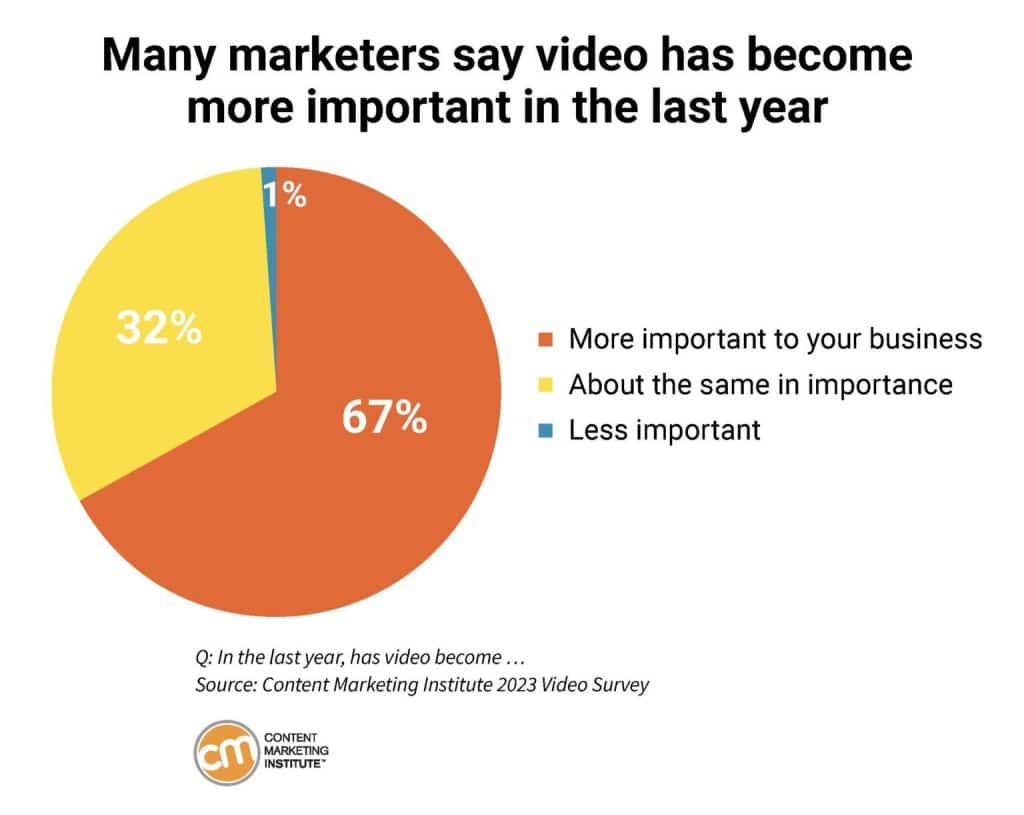
Image Source: Content Marketing Institute
By experimenting with different types of content, you can discover what works best for your audience.
Create a series of content pieces in various formats around a similar topic. Track how each piece performs in terms of user engagement, time on page, and social shares. This will give you valuable insights into the content preferences of your audience, allowing you to tailor your content strategy to their tastes.
4. Landing Page Elements
The landing page is where your prospects land, and it’s where you either win or lose them. Every element on the page plays a part in driving conversions, from the headline and images to the call-to-action (CTA) buttons and layout.
To optimize your landing page, tweak one element at a time. For example, try different headlines to see which one captures attention and keeps visitors on the page longer. Change the color or text of your CTA button to see which leads to more clicks.
Use analytics to measure the performance of each variation in terms of conversion rates. This methodical approach can significantly increase the effectiveness of your landing pages.
5. Content Personalization
Personalized content tailors the user experience to individual preferences, behaviors, and needs. This can range from addressing the user by name in emails to displaying different homepage content based on past interactions.
To experiment with content personalization, start by segmenting your audience based on available data points like:
- Location
- Browsing history
- Purchase behavior
Then, create content variations tailored to each segment. Use website analytics to track how each segment responds in terms of engagement, conversion rates, and customer satisfaction. Over time, you’ll learn which personalization tactics resonate best and can refine your approach to deliver a more targeted user experience.
6. User-Generated Content
User-generated content (UGC) is a powerful way to build community and authenticity around your brand. It’s content created by your customers, such as reviews, photos, or videos, that showcases their experiences with your brand.
Video Source: Inbound Explained
Encourage your customers to share their content by creating a hashtag, running a contest, or featuring UGC on your own channels. Monitor the volume of UGC created, its reach, and its impact on engagement compared to your brand-created content.
Not only does UGC provide social proof, but it also gives you insights into how customers are using and perceiving your products or services.
7. Influencer Collaborations
Influencer marketing taps into the trust that influencers have built with their followings. Collaborating with influencers can extend your reach and lend credibility to your brand.
Choose influencers whose audiences align with your target demographic and whose values reflect your brand. Run campaigns where influencers share your content or create their own content that relates to your brand.
Measure the success of these collaborations by tracking campaign-specific metrics like engagement rates, referral traffic, and conversion rates that can be attributed to the influencer’s content.
8. Chatbots for Customer Service
Chatbots are revolutionizing customer service by providing instant, 24/7 assistance. In fact, chatbots are expected to become the primary customer support channel for a quarter of all companies by 2027.

Image Source: Dashly
Implementing a chatbot on your website or social media channel can improve customer engagement and resolution rates.
Deploy a chatbot to handle common customer inquiries and track its performance against traditional customer service channels. Key metrics to consider include:
- Resolution time
- Customer satisfaction scores
- Percentage of inquiries fully handled by the chatbot
This data will help you understand how a chatbot can enhance your customer service and where human intervention is still necessary.
9. Referral Programs
Referral programs incentivize your existing customers to spread the word about your brand. They’re a powerful tool for organic growth, leveraging the trust between friends or colleagues.
To set up a referral program, decide on the incentives that will motivate your customers to participate—discounts, free products, or service upgrades.
Launch the program and promote it to your customer base. Track how many new customers you acquire through the program and the overall cost-effectiveness compared to other acquisition channels. Pay attention to the lifetime value of customers acquired through referrals, as they may differ from those acquired through other means.
10. SEO Keyword Variations
SEO is not a one-size-fits-all approach. Experimenting with different keyword variations can uncover niches that drive traffic but are less competitive. Start by identifying a set of new keywords, including long-tail keywords, which make up 70% of all SERP traffic.
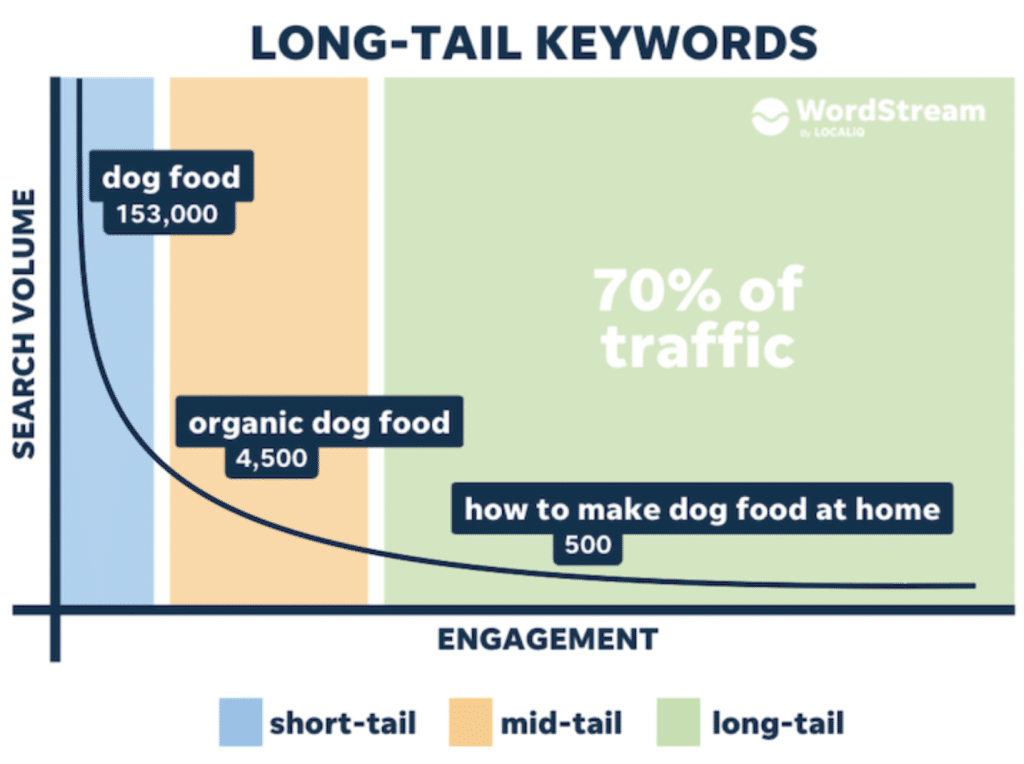
Image Source: WordStream
Create content that targets these new keywords and monitor your website’s performance in search rankings and traffic. Analyze which keywords bring in the most valuable traffic and lead to conversions. This can help refine your SEO strategy to focus on the most effective keywords for your business.
11. Voice Search Optimization
With the rise of smart speakers and virtual assistants, optimizing for voice search is becoming increasingly important. Voice search queries tend to be longer and more conversational. To optimize for voice, include questions and phrases in your content that people are likely to speak rather than type.
Implement structured data on your website to help search engines understand the context of your content, making it more likely to be featured in voice search results. Monitor changes in traffic from voice-activated devices to measure the impact of your optimization efforts.
12. Interactive Content
Interactive content, like quizzes, polls, and interactive videos, can significantly increase user engagement. This type of content encourages active participation, which can lead to longer time spent on your site and more social shares.
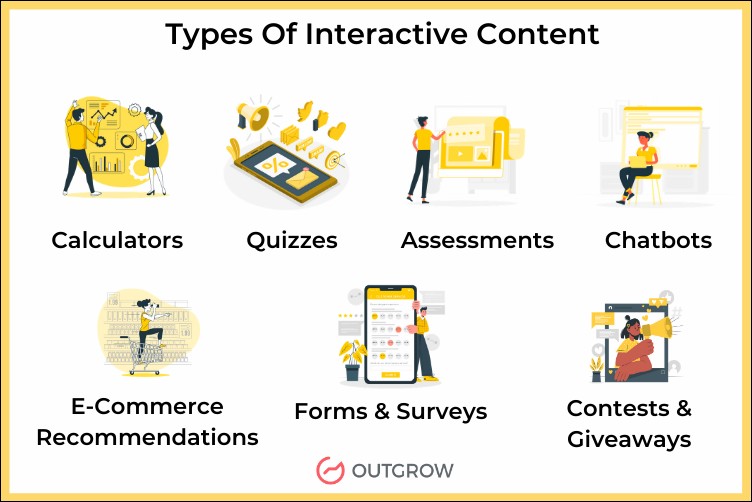
Image Source: Outgrow
Create interactive content that’s relevant to your audience and aligns with your brand. Use analytics to track user interaction rates and the average time spent on these interactive pages. Compare these metrics to your more static content to evaluate the effectiveness of interactive elements in engaging your audience.
13. Remarketing Campaigns
Remarketing campaigns are a strategic way to reconnect with users who have previously interacted with your website or mobile app. It’s about reminding them of their interest in your products or services and nudging them back towards making a purchase or taking another desired action.
To run a successful remarketing campaign, segment your audience based on their behavior—like visitors who abandoned their shopping cart or those who viewed specific product pages but didn’t make a purchase. Tailor your ads to each segment with a relevant message that addresses potential objections or offers a timely incentive.
Measure the success of your remarketing campaigns by tracking the increase in:
- Return visits
- Conversion rates
- Overall ROI
This will help you understand how effective your ads are in re-engaging past visitors and which messages resonate best with your audience.
14. Podcast Sponsorships
Podcast sponsorships offer a unique opportunity to reach a highly engaged audience in a personal and direct way. With the increasing popularity of marketing podcasts, sponsoring episodes that align with your brand’s values and target audience can be a smart move.
When selecting a podcast for sponsorship, consider the podcast’s:
- Listener demographics
- Reach
- Content relevance to your brand
Craft a compelling sponsorship message that fits naturally within the podcast’s format—whether it’s a host-read ad or integrated content.
To gauge the effectiveness of podcast sponsorships, track metrics like direct traffic from the podcast, brand mentions on social media, and any uptick in branded search queries. If you provide a promo code or special offer, you can also track the direct conversions from listeners.
Harness the Power of Marketing Experiments Today with MIG
Marketing experiments are the heartbeat of a dynamic and responsive strategy. By applying a methodical approach to your marketing efforts, you’re engaging in a calculated process of hypothesis, testing, and validation.
With each experiment, you’re building a stronger, more effective marketing machine—one that’s fine-tuned by data and powered by creativity.
Ready to harness the power of marketing experiments? Check out our SEO Blog Writing Service or schedule a quick consultation to learn more about how Marketing Insider Group can help you earn more leads for your business.






